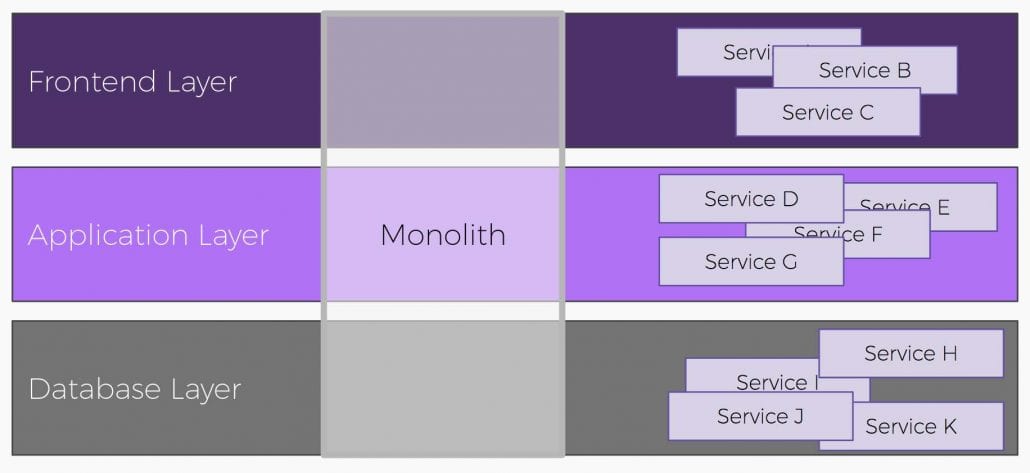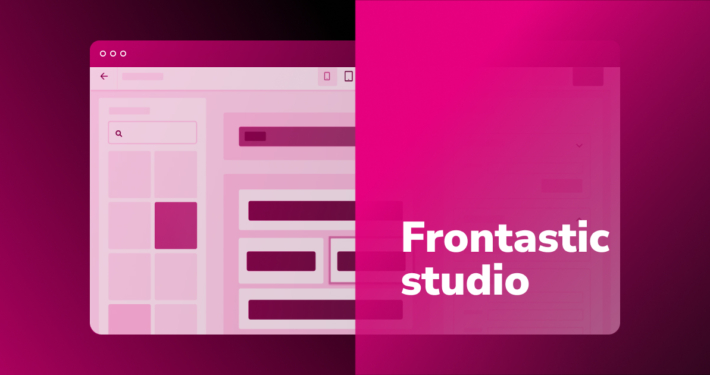Frontend-as-a-Service: explained in easy terms
We want to explain what a Frontend-as-a-Service really is and does.
But let’s take a step back first and have a look at Service Oriented Architecture (SOA). SOA is the answer to the increasing speed of innovation in IT. The good old monolith — a software program that tries to cover the widest possible range of applications — is today no longer able to offer sufficient flexibility, speed, and to meet the demands of modern commerce projects.
Microservices for less complexity
On the one hand, it’s about the automation of functions and, on the other hand, about no longer having to install and operate software in a complicated way, but simply being able to consume it as a service.
In this way, new services can be added flexibly or existing services can be replaced.
Well-known providers of API first or headless eCommerce solutions are commercetools and, in the area of headless CMS, Contentful.
Here’s a list of the most frequently used acronyms:
Headless services — Headless CMS and headless shops
In the course of this specialization, many systems lose their head: the frontend. This allows manufacturers to concentrate fully on the technical functionality and offers maximum flexibility in presentation. However, the frontend can’t be omitted without replacement, because the content provided must be displayed and consumed by the user. This is where the path of virtue — service orientation — is usually left behind:
Usually, individual software is developed here on the basis of development frameworks such as Symfony or AngularJS. There’s a simple reason for this: there’s no Frontend-as-a-Service yet. So while there’s a variety of vendors to choose from for each part of a microservice-oriented architecture, companies have to make do with a “handmade” solution in the frontend.
Scalability and flexibility: What Frontastic has to offer
Frontastic has announced the first cloud first and mobile first Frontend-as-a-Service. A Frontend-as-a-Service comes with the same value proposition for the top application layer as the other services:
- Easy to use, without complex installation or programming
- Easy scalability
- No know-how required for operation as these are part of the service
- Flexible pricing
Frontend service as a solution for modern eCommerce
The frontend service is the service responsible for displaying the right content on the different target devices and systems (Smartphone, Desktop-Browser, Display at the Point-of-Sales, Wearable like Smartwatch, …) quickly and optimally for the respective display.
The content can come from different source systems: classic from a Content Management System (CMS), from an eCommerce solution, but also from sources such as Enterprise Resource Planning (ERP) systems or CRMs (Customer Relationship Management) as well as many more (see table “Everything-as-a-Service”) are possible.
In the Frontend-as-a-Service, these sources are combined into atomic design building blocks. These building blocks can come from different source systems, for example, a specific article from eCommerce and a supplementary text from the CMS. In a partner portal, for example, it could be certain information about the partner and the leads from the CRM and additional information, for example, about the partner’s sales, from the ERP system.
These modules are initially completely layout-independent descriptions, which are combined by editors in the next level to form device-specific layouts. So, for the classic shop, there are different layouts for the smartphone, the desktop, and the TV app.
The big advantage of Frontastic is that an editor doesn’t need the support of a service provider to create these layouts. The service provider/developer, on the other hand, can focus on the further development of the integrations, basic functionalities, and expansion of the modular system.


